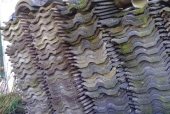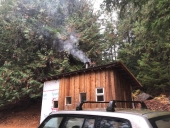
 15
15





" All that is gold does not glitter; not all those who wander are lost; the old that is strong does not wither; deep roots are not reached by the frost. " J. R. R. TOLKIEN
 5
5




" All that is gold does not glitter; not all those who wander are lost; the old that is strong does not wither; deep roots are not reached by the frost. " J. R. R. TOLKIEN

 8
8




For all your Montana Masonry Heater parts (also known as) Rocket Mass heater parts.
Visit me at
dragontechrmh.com Once you go brick you will never go back!
 6
6




thomas rubino wrote:
It sounds like you have a good understanding of how to approach a new build.
An overall good plan, of course, there will be details that will need clarification.
thomas rubino wrote:
I do suggest buying an RA253ma stub for your secondary tube, rather than the RA330.
I have used both and sold both, but the RA253 has proven itself to be as impervious to the internal batchbox temperatures as the RA330.
I have stopped stocking the RA330 and now only stock the RA253, as it is that good.
thomas rubino wrote:
With a heavy brick core and riser, it will take a bit to reach working temperature, but it will retain that heat far longer.
thomas rubino wrote:
All my cores are heavy brick, but for the riser, I use Morgan Superwool and create five-minute risers for them.
thomas rubino wrote:
Especially with your climate, a good bypass is essential for enjoyable operation.
" All that is gold does not glitter; not all those who wander are lost; the old that is strong does not wither; deep roots are not reached by the frost. " J. R. R. TOLKIEN




 10
10






For all your Montana Masonry Heater parts (also known as) Rocket Mass heater parts.
Visit me at
dragontechrmh.com Once you go brick you will never go back!

 8
8




Proudly presenting RocketMassHeaters.com
A good starting point to all RMH research
How Permies.com works
 6
6




" All that is gold does not glitter; not all those who wander are lost; the old that is strong does not wither; deep roots are not reached by the frost. " J. R. R. TOLKIEN
 7
7




" All that is gold does not glitter; not all those who wander are lost; the old that is strong does not wither; deep roots are not reached by the frost. " J. R. R. TOLKIEN
 8
8




 7
7




" All that is gold does not glitter; not all those who wander are lost; the old that is strong does not wither; deep roots are not reached by the frost. " J. R. R. TOLKIEN

 8
8









 7
7




Proudly presenting RocketMassHeaters.com
A good starting point to all RMH research
How Permies.com works

 8
8




 6
6




Glenn Herbert wrote:It looks like the G-26 IFB would be fine for the riser, while the AL80 firebrick would stand up to wear in the firebox and port.
" All that is gold does not glitter; not all those who wander are lost; the old that is strong does not wither; deep roots are not reached by the frost. " J. R. R. TOLKIEN
 6
6





|
Cat talks about fish. Like it needs a fix. This tiny ad told me to never say "fix" to a cat person:
Communities Directory Book, Edition VII (2016)
https://permies.com/t/210954/ic-org/Communities-Directory-Book-Edition-VII
|






